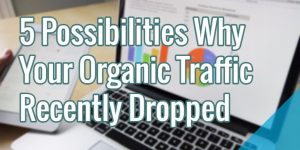Authenticity Proven To Reduce Digital Ads’ Carbon Footprint

Google has been pushing authenticity in ads and content for years. Now global analysis of more than one trillion ad impressions in display and video show a direct correlation between high-quality digital ads and lower carbon emissions.
DoubleVerify, with help from Scope3 impact data, measured the quality of ad inventory rated by the percentage of ads verified as brand-suitable, fraud-free, and in the correct geography. It also measured the link with authenticity.
Mark Zagorski, CEO at DoubleVerify, specifically called out “high-quality, fraud-free advertising” to optimize performance and support broader sustainability goals.
He likely made the statement because the data shows that high-quality and authentic ads lower the emission of carbon from serving the ads. As ad quality declines, emissions tend to rise.
The study also found high-tier made for advertising (MFA) sites known for high ad density emit 44% more carbon emissions relative to the average emissions across DoubleVerify-measured media. High authenticity rates also play a positive role.
The approach to measuring the carbon impact of digital ads relies on a partnership with Scope3, a provider of ad-emissions data, launched in 2022.
DoubleVerify calculated that media quality protections helped avoid a quantifiable 64.9 thousand metric tons of CO2 emissions waste from non-authentic ads in 2023, equivalent to a $13.2 million social cost of carbon or $204 per metric ton of CO2.
The social cost of carbon quantifies and monetizes the incremental costs to society of climate-change impacts resulting from the emission of one additional metric ton of CO2 or its equivalent.
DoubleVerify’s partnership with Scope3 says its customers produced an average 0.28 grams of carbon dioxide emissions (gCO2 e) per impression between March and December of 2023 — 21% lower than the Scope3 global average for the same period (0.35 gCO2 e).
The average Authentic Rate across DoubleVerify advertisers is nearly 95%, compared to 83% on the unprotected campaign. The data shows a quantifiable 64.9 thousand metric tons of CO2 emissions waste from non-authentic ads in 2023. This is equivalent to a $13.2 million in social cost.
Quality and authenticity concerns have been highlighted by artificial intelligence. The report notes that 54% of media buyers believe generative AI and increasingly sophisticated fraud schemes negatively impact media quality.
The bigger picture pulls in easily generated content created by users. MediaPost has reported on this trend for years — with user-generated content — but now AI has made it even easier to create. DoubleVerify stated in the report that the unique content seen on popular social platforms continues to increase up to 100% monthly.
Computer vision models and optical character recognition such as Microsoft’s technology, as reported on Wednesday, are helping to proliferate this trend.
The AI large language model Florence-2 can create content for marketing, advertising, and storytelling by really understanding text prompts to generate images.
(3)





